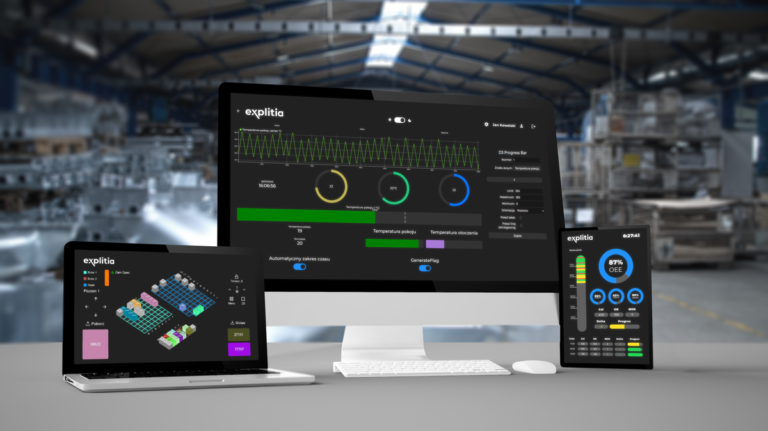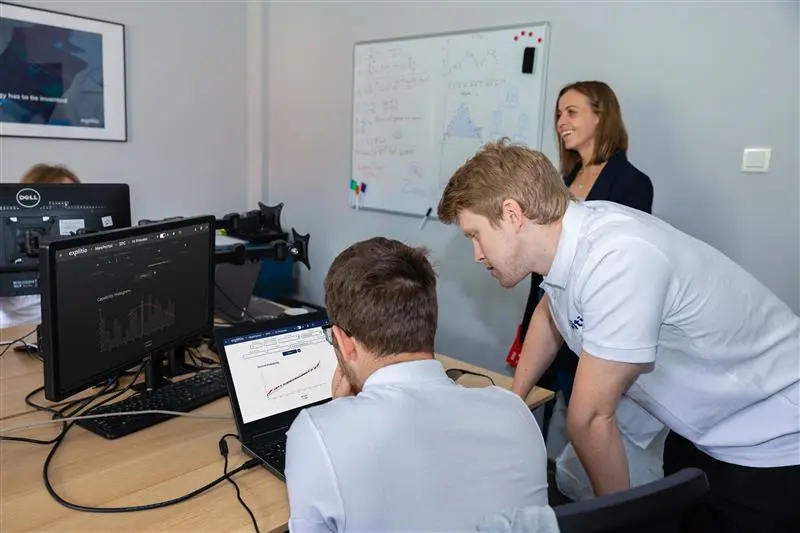The smooth operation of a warehouse is like a well-oiled machine, where every component must function precisely and without disruptions. To achieve this, it is crucial to take care of the buffer zone, which acts as a mediator between various warehouse processes. Are you wondering what exactly a buffer zone is and why it is so important in a warehouse? In this article, you’ll find answers to these questions. And as a bonus, we have a few tips to help you optimize this area in your logistics.
What is a buffer zone in a warehouse?
A buffer zone in a warehouse is a designated area for temporarily storing goods between different stages of warehouse operations. You can think of it as a waiting area at a train station – a place where passengers wait for their transfer. In logistics, it is typically located near unloading, order picking, or packing areas. It serves as a logistical cushion, preventing bottlenecks and ensuring a smooth flow of goods.
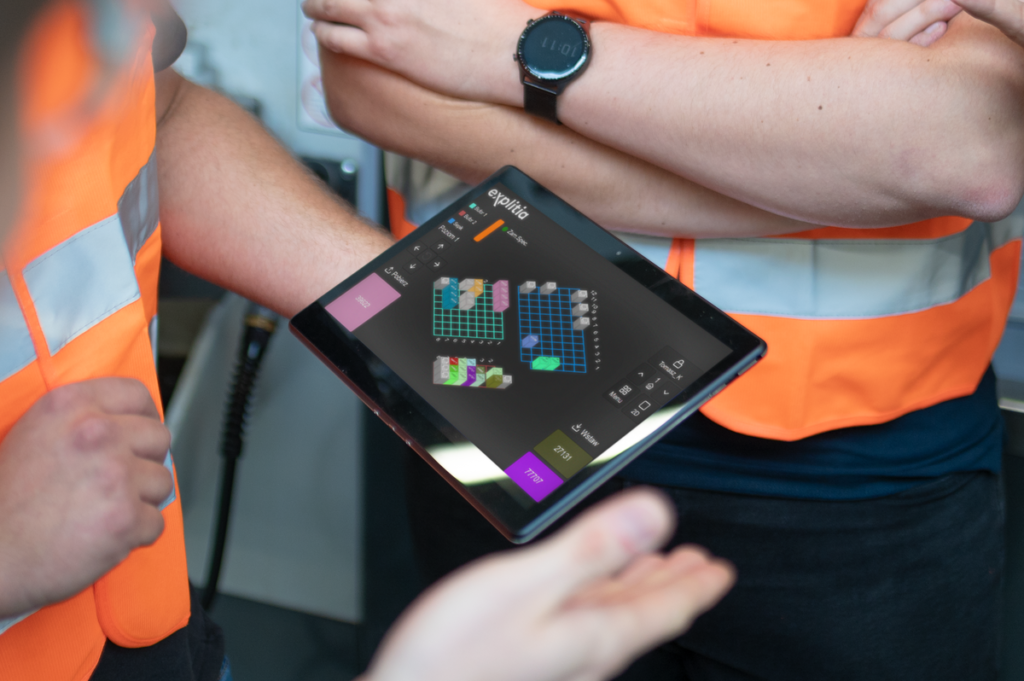
Functions of a buffer zone in a warehouse
A buffer zone in a warehouse plays several important roles, including:
• Organizing the flow of goods – facilitating a smooth transition between storage, order picking, and shipping.
• Increasing safety – reducing chaos in the warehouse and minimizing the risk of collisions during loading and unloading.
• Providing flexibility in order management – allowing temporary storage of excess goods or delayed deliveries.
• Supporting the just-in-time transport of materials from the warehouse to production lines.
The role of the buffer zone in warehouse efficiency
A well-organized buffer zone significantly enhances the efficiency of the entire warehouse facility. It acts as a safety valve in cases of fluctuating demand, delivery delays, or seasonal peaks. Additionally, the buffer zone helps optimize truck unloading times, as goods can be quickly moved from the receiving area to the buffer, freeing up space for incoming shipments. Automation systems in the buffer zone streamline processes such as labeling, quality control, and preparing products for further transport.
A key role in this process is played by the Explitia Production Portal module, which is responsible for managing production buffers. This WMS-class solution enables real-time monitoring of buffer occupancy levels.
Common applications of buffer zones
In modern warehouses, buffer zones are used in various processes, such as:
• Consolidation areas for orders before shipping.
• Transitional storage during inventory counts.
• Temporary storage of goods awaiting quality control.
They are also frequently used for packing and order picking, especially when processing a large number of orders simultaneously.
How to optimize a buffer zone in a warehouse
To fully utilize the potential of a buffer zone, it is essential to implement warehouse space management software.
This is where Explitia comes in. As part of the Production Portal, its advanced buffer management system provides full control over goods allocation and flow. It allows you to:
• Design warehouse layouts, optimizing component placement based on FIFO or LIFO strategies. The system automatically analyzes platform distribution and selects optimal storage locations, considering platform sizes, load weights, and predefined rules (e.g., grouping components in a single channel).
• Efficiently locate goods and platforms, thanks to real-time inventory tracking and fast filtering.
• Generate inventory reports, user activity logs, and detailed platform summaries, supporting effective buffer management.
• Visualize the warehouse buffer zone in a clear and user-friendly way with different viewing options.
• Integrate warehouse data with ERP and MES systems.
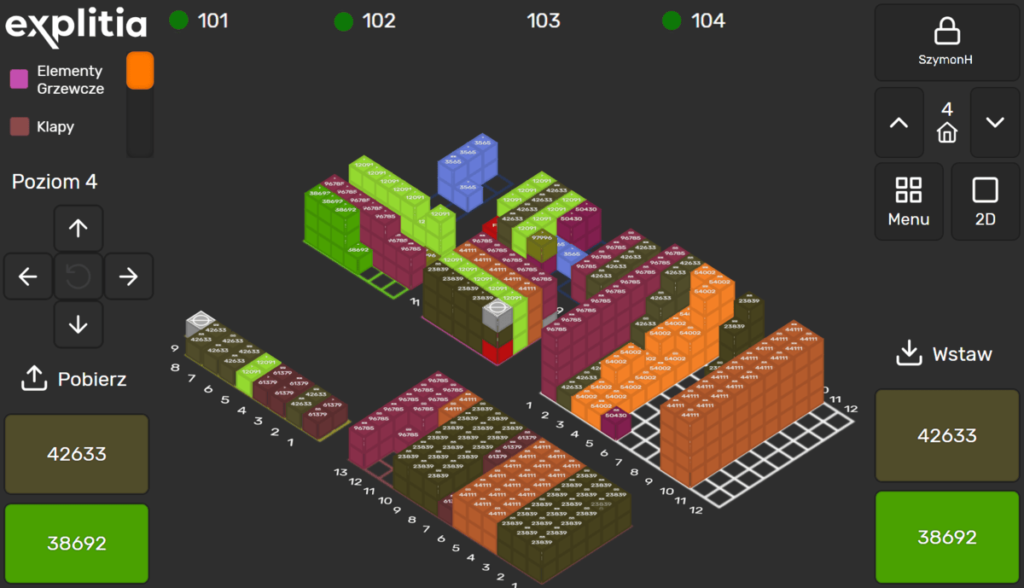
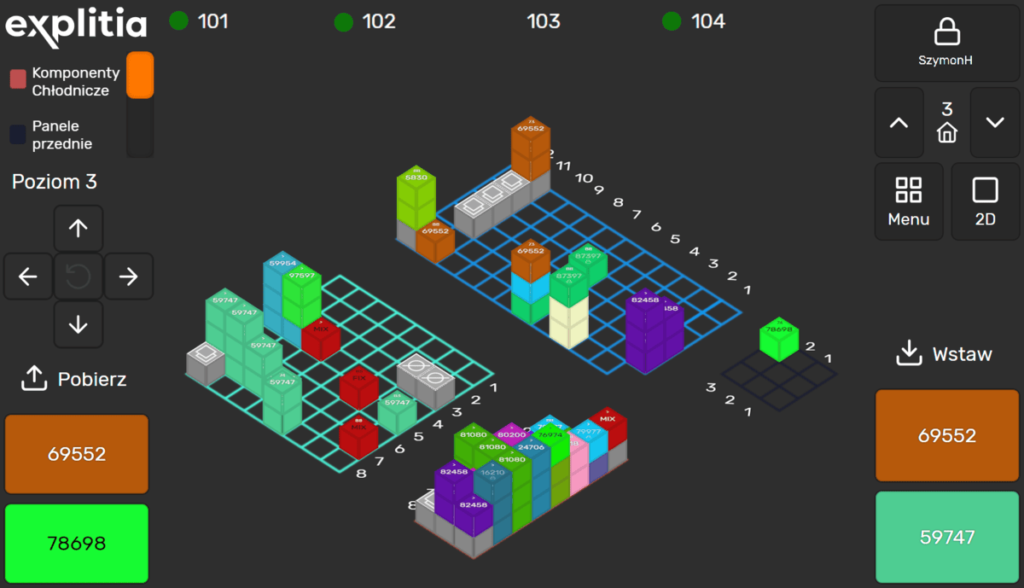
In short, automation enables dynamic buffer size adjustments to current needs and real-time monitoring of goods flow.
An important factor in optimization is also the strategic location of the buffer zone – it should be easily accessible from both the receiving and dispatch areas. Dividing the buffer into sectors based on product types or operational needs further boosts efficiency. Additionally, ensuring safety through clearly marked storage and transport zones is crucial.
A well-managed buffer zone is the foundation of seamless warehouse operations. It allows for flexible workload management, improves logistics processes, and contributes to the smooth operation of the entire supply chain. Keep in mind that proper use of this space can significantly enhance your warehouse’s efficiency.
That’s why investing in automation and digital management systems, such as MES, EMS, or WMS, is a smart move. Digital transformation will ultimately lead to greater efficiency and productivity in logistics processes.
